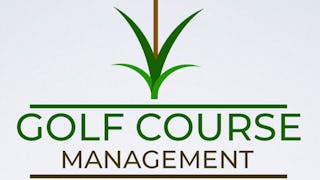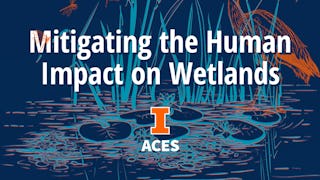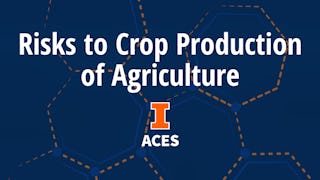The Sports Turf Management: Best Practices course will cover the construction, management, and challenges in maintaining athletic fields intended for football, soccer, and baseball. You will learn the fundamental management practices for maintaining athletic fields, such as fertilization, irrigation, mowing, and pest control. An overview of athletic field construction, highlighting the advantages and disadvantages of native soil versus modified soil fields, will be provided. Lastly, you will explore the effects of traffic and compaction on athletic fields and the development of artificial turf.



(15 reviews)
Details to know

Add to your LinkedIn profile
6 assignments
See how employees at top companies are mastering in-demand skills


Earn a career certificate
Add this credential to your LinkedIn profile, resume, or CV
Share it on social media and in your performance review

There are 5 modules in this course
Module one will examine the principles of athletic field construction. Explore site analysis factors such as drainage and soil condition. Overall, the principles of athletic field construction require careful planning, attention to detail, and expertise to ensure a safe and functional playing surface.
What's included
10 videos4 readings1 assignment
The right tools and techniques are essential for effective athletic field maintenance. Regular maintenance is vital for the safety and longevity of the field and for the enjoyment of the players who use it. This module will discuss critical aspects of athletic field maintenance, including mowing, fertilizing, aerating, and irrigating. An athletic field can provide a safe and enjoyable playing surface for years with proper care.
What's included
6 videos3 readings1 assignment
Maintaining athletic fields can be a challenge, especially when it comes to traffic and compaction. Traffic refers to the movement of people and equipment over the field, while compaction refers to the compression of soil caused by this traffic. Both can harm the health and longevity of the field, leading to reduced playability and increased risk of injury. In this module, we will explore the causes and effects of traffic and compaction on athletic fields and strategies for preventing and mitigating these issues. Whether you are a coach, groundskeeper, or concerned community member, this module will provide valuable insights into how to keep your athletic fields in top condition for years to come.
What's included
7 videos2 readings1 assignment
Artificial turf fields have become increasingly popular due to their durability and low maintenance requirements. Constructed of synthetic fibers that mimic the look and feel of natural grass, these fields make an attractive option for sports teams and recreational facilities. In addition to being more resistant to wear and tear than natural grass, artificial turf can be used regardless of weather conditions. However, some concerns about these fields' safety and environmental impact exist.
What's included
5 videos3 readings1 assignment
Explore additional resources, use the information you learned throughout the course to analyze a case study, and complete the final assessment.
What's included
1 video5 readings2 assignments
Instructor

Offered by
Recommended if you're interested in Environmental Science and Sustainability


University of Illinois Urbana-Champaign


University of Illinois Urbana-Champaign


University of Illinois Urbana-Champaign


University of Illinois Urbana-Champaign
Why people choose Coursera for their career




Learner reviews
15 reviews
- 5 stars
80%
- 4 stars
20%
- 3 stars
0%
- 2 stars
0%
- 1 star
0%
Showing 3 of 15
Reviewed on Jul 28, 2024
Learned a lot of the different types of fields and the best practices associated with each
Reviewed on Aug 13, 2024
This course enhances my knowledge in sport turf management. Thank you, Coursera.

Open new doors with Coursera Plus
Unlimited access to 10,000+ world-class courses, hands-on projects, and job-ready certificate programs - all included in your subscription
Advance your career with an online degree
Earn a degree from world-class universities - 100% online
Join over 3,400 global companies that choose Coursera for Business
Upskill your employees to excel in the digital economy
Frequently asked questions
Access to lectures and assignments depends on your type of enrollment. If you take a course in audit mode, you will be able to see most course materials for free. To access graded assignments and to earn a Certificate, you will need to purchase the Certificate experience, during or after your audit. If you don't see the audit option:
The course may not offer an audit option. You can try a Free Trial instead, or apply for Financial Aid.
The course may offer 'Full Course, No Certificate' instead. This option lets you see all course materials, submit required assessments, and get a final grade. This also means that you will not be able to purchase a Certificate experience.
When you enroll in the course, you get access to all of the courses in the Specialization, and you earn a certificate when you complete the work. Your electronic Certificate will be added to your Accomplishments page - from there, you can print your Certificate or add it to your LinkedIn profile. If you only want to read and view the course content, you can audit the course for free.
If you subscribed, you get a 7-day free trial during which you can cancel at no penalty. After that, we don’t give refunds, but you can cancel your subscription at any time. See our full refund policy.
More questions
Financial aid available,


